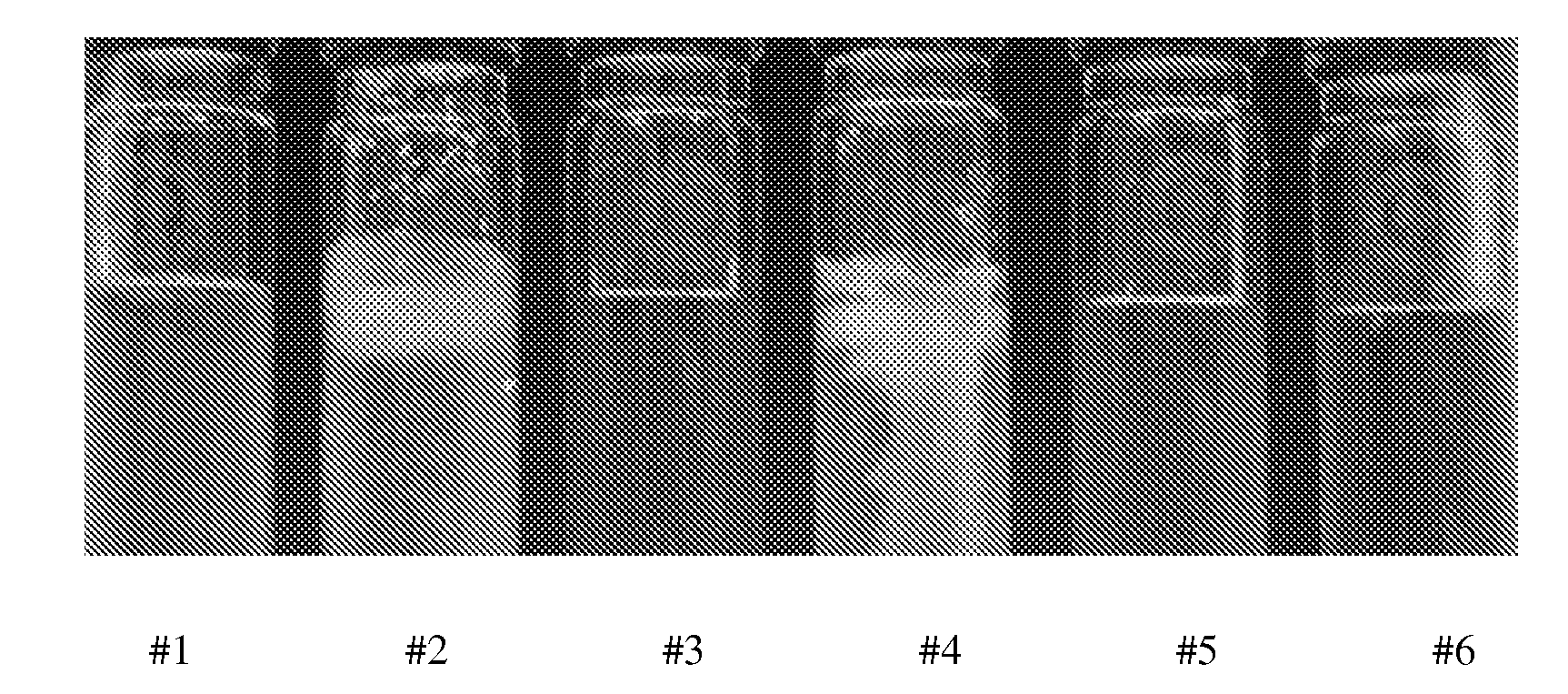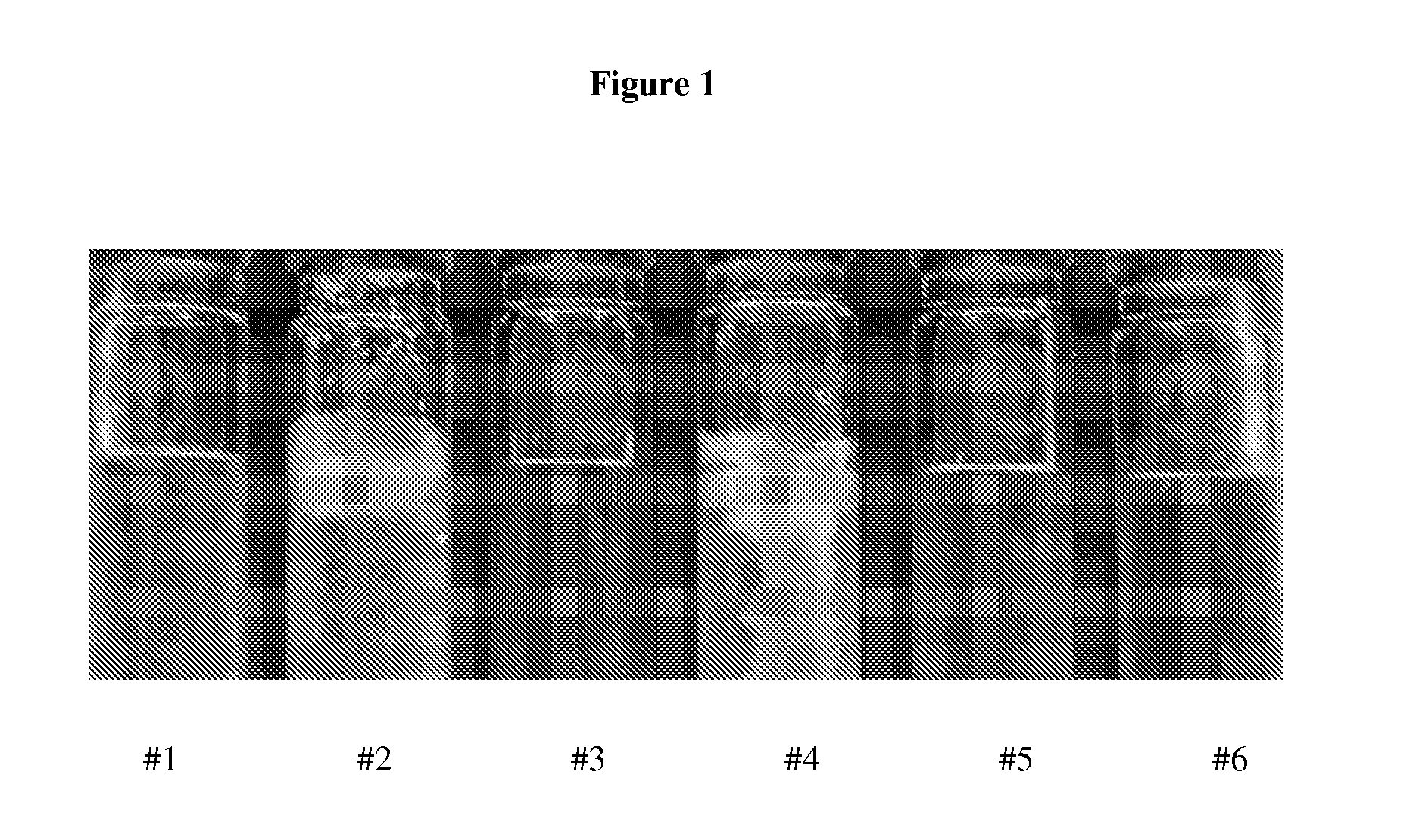Stability of polyurethane polyol blends containing halogenated olefin blowing agents
a technology of halogenated olefin and polyurethane, which is applied in the direction of other chemical processes, chemistry apparatuses and processes, etc., can solve the problems of reduced shelf life of b-side composition, low energy efficiency, and reduced reactivity of pentane isomers, and achieves prolonged shelf life stability, less reactivity, and better catalytic performan
- Summary
- Abstract
- Description
- Claims
- Application Information
AI Technical Summary
Benefits of technology
Problems solved by technology
Method used
Image
Examples
example 1
[0061]A series of binary blends for a B-side composition of a two-component system were prepared and analyzed which combine a hydrohaloolefin with various amine catalysts. To ensure a true comparison, each of the blends included the same halogenated olefinic blowing agent, specifically the hydrochlorofluoroolefin (HCFO) HCFO-1233zd “E”. The following binary blend compositions were prepared and analyzed:[0062]Comparative Blend #1: 98 wt % pentamethyldiethylenetriamine (PMDETA) catalyst and 2 wt % HCFO-1233zd “E”, aged at room temperature for 15 days;[0063]Comparative Blend #2: 98 wt % pentamethyldiethylenetriamine (PMDETA) catalyst and 2 wt % HCFO-1233zd “E”, aged at 50° C. for 15 days;[0064]Exemplary Blend #3: 98 wt % N,N,N′-trimethyl-N′-hydroxyethyl-bisaminoethylether and 2 wt % HCFO-1233zd “E”, aged at 50° C. for 15 days;[0065]Exemplary Blend #4: 98 wt % bis-(2-dimethylaminoethyl)ether and 2 wt % HCFO-1233zd “E”, aged at 50° C. for 15 days;[0066]Exemplary Blend #5: 98 wt % 2-(2-di...
example 1a
[0070]Example 1a shows the effect of ageing on the blends containing a hydrochlorofluoroolefin (HCFO) HCFO-1233zd “E” halogenated olefinic blowing agent, dimethylcyclohexylamine, and pentamethyldiethylenetriamine (PMDETA). Dimethylcyclohexylamine sold under the trade name POLYCAT® 8 and pentamethyldiethylenetriamine sold under the trade name POLYCAT® 5 were used for this experiment, both of which are available from Air Products and Chemicals, Inc.
[0071]The binary blend of HCFO-1233zd “E” and dimethylcyclohexylamine was prepared in a glass tube with a weight percent ratio of 90:10. The sample was then placed in an oven at 80° C. for 16 days. The sample was taken out of the oven. The weight of the glass tubes was compared to their initial weight to verify that the tube had no leaks. Visual inspection showed that all samples suffered from turbidity and solids could be seen at the bottom of the tubes. As is known in the art, a smoked paper filter was used to collect and quantify the amo...
example 1b
[0072]Example 1b shows the effect of ageing of the polyol premix containing dimethylcyclohexylamine prior to the addition of pentamethyldiethylenetriamine and a silicone surfactant. Dimethylcyclohexylamine sold under the trade name POLYCAT® 8 and pentamethyldiethylenetriamine sold under the trade name POLYCAT® 5 were used for this example, both of which are available from Air Products and Chemicals, Inc. A silicone surfactant sold under the trade name TEGOSTAB® B 8465 by Evonik Industries—Degussa was used for this example.
[0073]The polyol pre-mix was prepared according to the following procedure: 100 parts by weight of a polyol blend, 1.0 parts by weight of dimethylcyclohexylamine, 2.2 parts by weight of water and 11.8 parts by weight of E1233zd blowing agent were mixed together to produce a polyol pre-mix blend. The polyol pre-mix was aged at ambient temperature for 15 and 190 days. Post-ageing, 0.3 parts by weight of pentamethyldiethylenetriamine and 2.0 parts by weight of silicon...
PUM
| Property | Measurement | Unit |
|---|---|---|
| Structure | aaaaa | aaaaa |
| Metallic bond | aaaaa | aaaaa |
| Stability | aaaaa | aaaaa |
Abstract
Description
Claims
Application Information
 Login to View More
Login to View More - R&D
- Intellectual Property
- Life Sciences
- Materials
- Tech Scout
- Unparalleled Data Quality
- Higher Quality Content
- 60% Fewer Hallucinations
Browse by: Latest US Patents, China's latest patents, Technical Efficacy Thesaurus, Application Domain, Technology Topic, Popular Technical Reports.
© 2025 PatSnap. All rights reserved.Legal|Privacy policy|Modern Slavery Act Transparency Statement|Sitemap|About US| Contact US: help@patsnap.com


